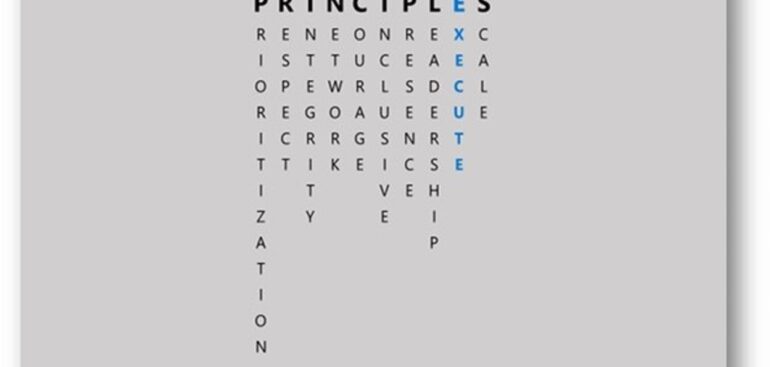Sue Grafton—a best-selling American novelist—once said, “ideas are easy. It’s the execution of ideas that really separates the sheep from the goats.” She couldn’t be more right.
You can have the best idea and a strong plan, but if you can’t execute, then it’s all for not. I’ve seen a lot of great ideas fall flat because they simply weren’t executed well. Unfortunately, some of those were my own “great” ideas. 😊
This is where I’ve found it’s often better to have an okay idea that’s well executed than a great idea that doesn’t get off the ground. How we set ourselves up to execute on our ideas and visions is what makes all the difference.

Getting off the ground: executing your plan
So, what are the steps necessary to execute on your plan? For me there are four, straight-forward components:
- Get Aligned – Everyone has to be rowing in the same direction. Create clarity by defining a strategy, principles and an execution plan with a clearly defined outcome. What does success look like? Get people excited about the vision and help them buy-in. Always build the execution plan TOGETHER.
- Socialize the Plan – Talk about the strategy with everyone—to the point where you can’t think of someone you haven’t Debate it and collect feedback throughout the process. That’s when good ideas become terrific ideas. Getting input from people who will question the plan’s success, will push the team to do better and keep things on track. Don’t forget: socialization is iterative – not a one-and-done thing.
- Create Clear Roles & Responsibilities – How are you going to bring the vision to life? Who’s doing what to get there? One of the keys to proper execution is matching responsibilities to capabilities. Great project managers know their team’s individual skill sets and play to those strengths.
- Check as you Go – Are you on the right path? Execution requires ongoing project management. When you lay out the roadmap to success, build check-ins and milestones, build in go/no-go checkpoints to measure if you’re on track.
If the project has taken you on a path different from your execution plan, analyze and be prepared to shift and even to restart if it has gone off track from the objective or something in the business case has significantly shifted.
Avoiding the crash and burn
Many things can derail a good execution plan. In my experience, complexity is the number one cause for crash and burn.
I remember when I was running the licensing team at Microsoft and we were coming up on our first set of renewals. Our first pass at an execution plan revolved around “12 steps to renew.” TWELVE STEPS! We determined that was way too many and boiled it down to THREE:
- Connect with your customer at least 12 months prior in advance to their renewal.
- Set up a meeting with the partner to create a T-12 customer engagement plan.
- Prepare the renewal proposal consistent with the customer’s conditions of success plan.
Once we did that, renewals took off. Simplicity is nearly always key. Which makes sense because our brains can really only handle three or four steps at a time.
In order to drive execution, you need a simple motion that is continuous, functional, and repeatable. We tend to over-complicate things. But when you boil things down to a 1-2-3 process, you’ll drive real success.
Delivering results and executing is critical. As I’ve said before, we work in a what-have-you-done-for-me-lately kind of world. Whether you’re working on a small project or a big game-changing idea, stay focused—with clarity and vision—and you will execute your goals.










